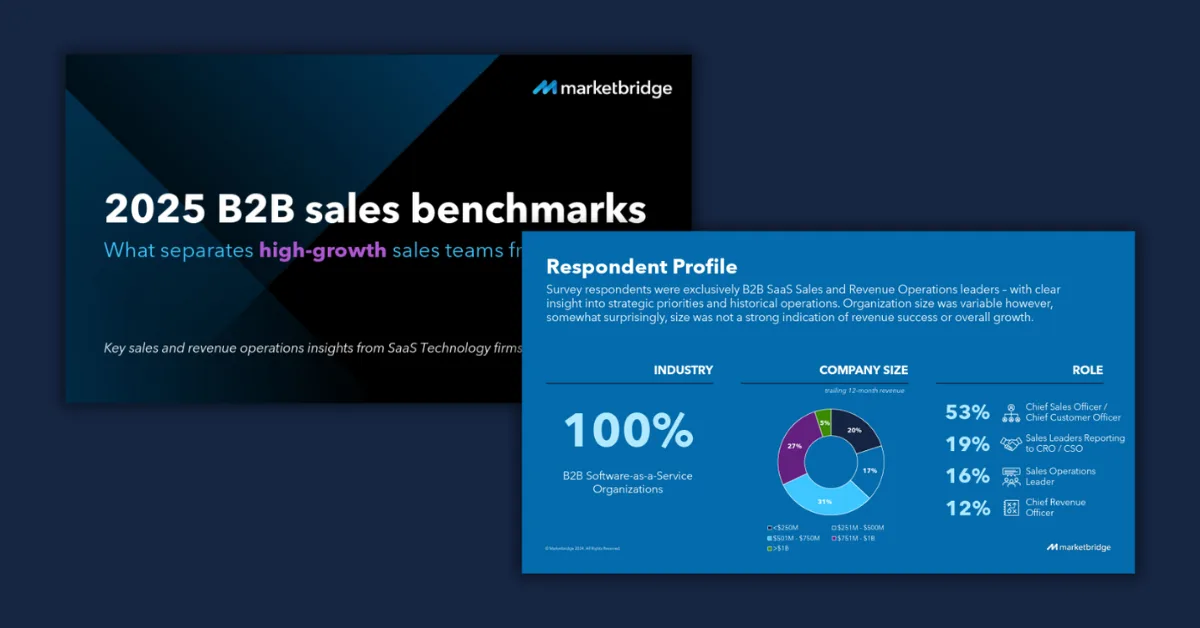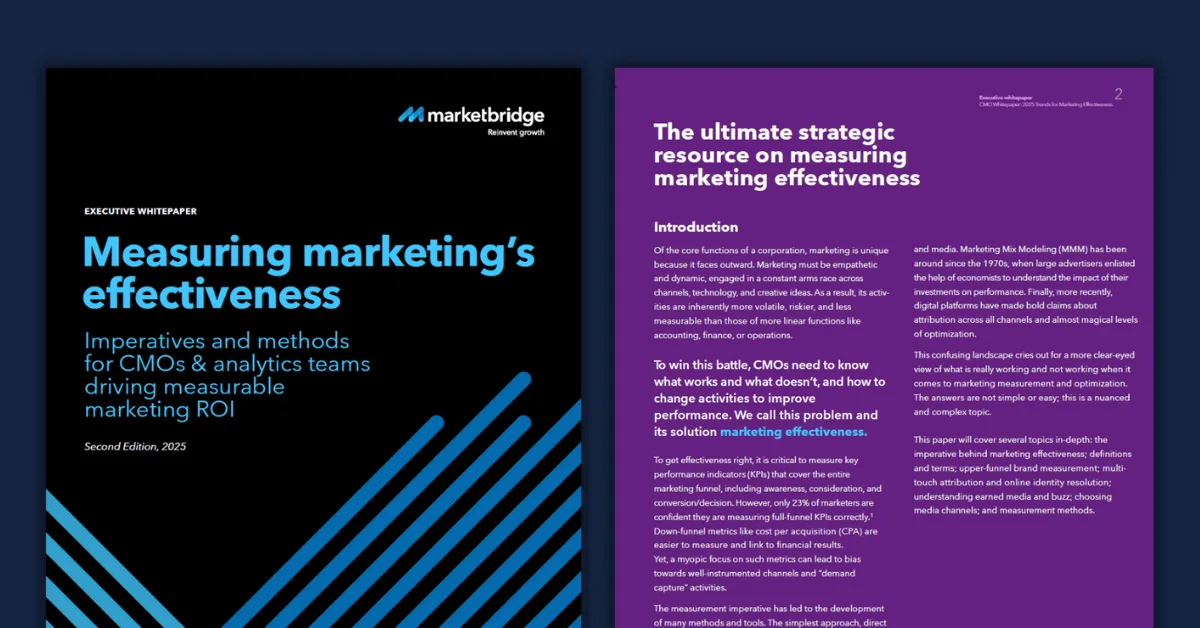We are thrilled to welcome April Six into the Marketbridge family, expanding our global capabilities.
Leadership
Meet the Executive
and Senior Leadership
Teams
Clients
Explore Marketbridge
clients by industry
News & press
Read press releases
and other industry
news
Careers
View open positions
and experience our
culture
Events
Browse upcoming
conferences and
speaking engagements
Contact
Connect with our team
and let’s reinvent
growth
We are Marketbridge.
Growth consulting and marketing for modern leaders.

Play video
Ready to reinvent growth? Let's connect.
Consulting Services
Agency Services
Use Cases/
Expertise

Play video
Ready to reinvent growth? Let's connect.
Ready to reinvent growth? Let's connect.

























